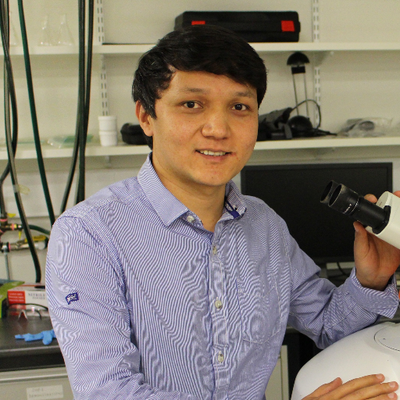June 21, 2012
Talk, 67th International Symposium on Molecular Spectroscopy, Columbus, Ohio, USA
It is believed that producing and trapping high concentrations of reactive species in solid molecular hydrogen will ultimately lead to the development of new high performance rocket fuels. We think the NH radical could be a viable candidate and try to produce it by photolyzing ammonia (NH3) at low temperature in solid parahydrogen. Upon 193.3 nm photolysis of NH3, we observe both NH2 and NH radical photoproducts. No significant changes in the NH radical concentration have been detected during a period of 3 hours at 1.8 K, even though the reaction NH + H2 rightarrow NH3 is highly exothermic and can occur by quantum mechanical tunneling even at these low temperatures. In contrast, the NH2 radical is only observed in FTIR scans recorded during photolysis and rapidly decays once the 193.3 nm laser is turned off. We will discuss the possible fates of NH2 and how conditions can be optimized to produce high concentrations of NH radicals..
